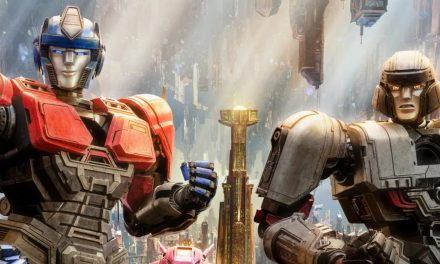You know the story: a lonely woodcarver makes himself a puppet son. A magic fairy brings the puppet to life. The wooden boy’s nose grows when he lies, and under the guidance of a cricket conscience, he learns what it means to be a real boy. Guillermo del Toro’s Pinocchio isn’t the first take on the story – it isn’t even the first to release this year – but it’s one of the most distinct, charming, and memorable adaptations of the story ever made.
Pinocchio like you’ve never seen it before
I’m a big Guillermo del Toro fan, but when I heard he was working on a Pinocchio film I’ll admit I was surprised. What does a del Toro take on Pinocchio really look like?
As it turns out, the answer in a word is “incredible.”
Del Toro’s Pinocchio really is Pinocchio like you’ve never seen it before. There are enough familiar plot points and moments to align with what we already know of the story (a cricket guide, temptation versus responsibility, a growing nose). But at the same time, del Toro takes the story we know and transforms it. The Blue Fairy becomes a Wood Sprite, the whale a sea monster, the cricket an aspiring novelist. The story becomes as much about the distinct setting as it does about the characters. And ultimately, it all comes together into something completely new.

What is del Toro’s Pinocchio? It’s still a story of a wooden puppet brought to life. But it’s also a story about the rise of fascism in 1930s Italy. About the horrors of war, especially its impact on children. About the meaning of life and death, and fantastic powers beyond our comprehension, and yes, the fundamental understanding of right and wrong. It is simultaneously distinctly Pinocchio at its core, while being nothing like any adaptation of the story you’ve ever seen.
Stunning puppetry & character design
The design of the characters in Pinocchio is simply stunning. The people look so distinct and life-like, from tired, sunken eyes and dirt under their fingernails, to the textured fabric of their clothing. I love different kinds of animation for different reasons, but the puppets created for this stop-motion tale really pop in a way another style simply wouldn’t.

And the fantasy elements are even better, in my opinion. The sea monster that swallows Geppetto and Pinocchio is so much more fun to see than a whale. The ethereal blue Wood Sprite looks like some sort of Eldritch god combined with a forest spirit straight out of Princess Mononoke. (And her sister Death, of course, is equally impressive.)
The Wood Sprite and the Black Rabbits have to be some of my all-time favorite character designs. These are the type of amazing fantasy looks that I think will really take off with fans. I’m definitely expecting some cool merch and impressive cosplays to come out of this.

Be prepared for things to get weird
If you haven’t already pieced it together, in this adaptation of Pinocchio, things get pretty weird. (Again, if you’re familiar with del Toro’s other work, this probably won’t surprise you.)
Real-life dictator Benito Mussolini is a character. So are a crew of undead poker-playing rabbits. At one point, Pinocchio asks Geppetto why everyone likes Jesus better than him. They paid Cate Blanchett to make monkey noises. There are puppet shows and war games and trips to purgatory.
Like I said before, it’s not the Pinocchio you know.
But its oddness contains that distinct del Toro charm throughout. Guillermo del Toro’s Pinocchio might not be the journey you’re expecting, but it’s a fairy tale in its own right – albeit a dark and strange one.

Guillermo del Toro’s Pinocchio is playing in select theaters now. It will premiere on Netflix December 9.

![Guillermo del Toro’s Pinocchio: Beautiful, Strange, & Memorable [Review]](https://www.thathashtagshow.com/wp-content/uploads/2022/11/project_20221121_1303218-01-1200x640.png)



![‘Grafted’ – Mean Girls Meets Body Horror With New Film On Shudder [Trailer]](https://www.thathashtagshow.com/wp-content/uploads/2024/12/unnamed-2024-12-20T110710.978-440x264.jpg)